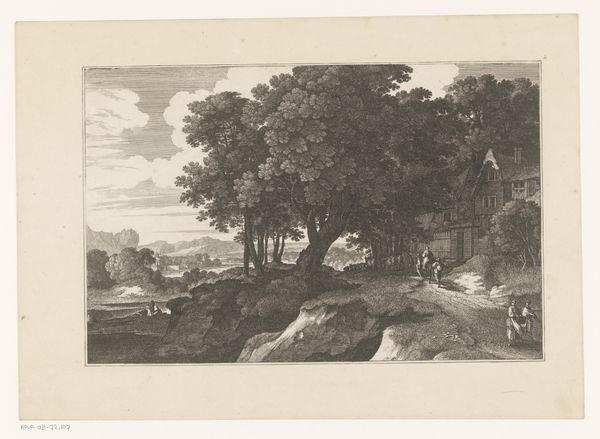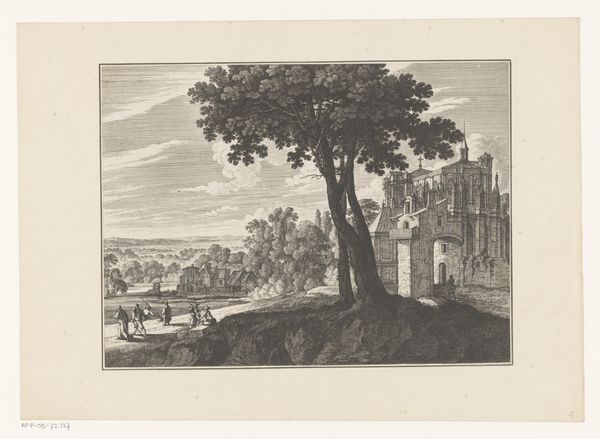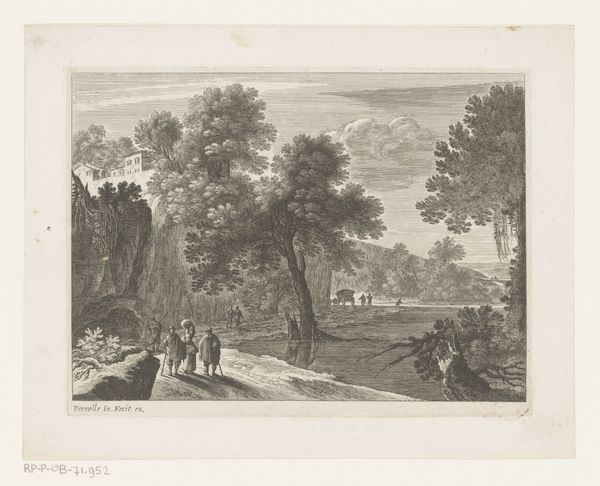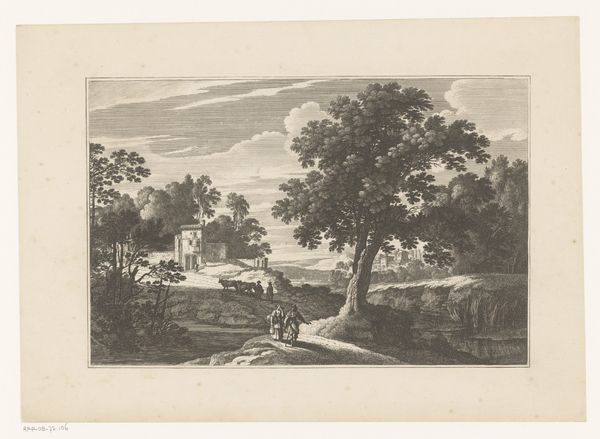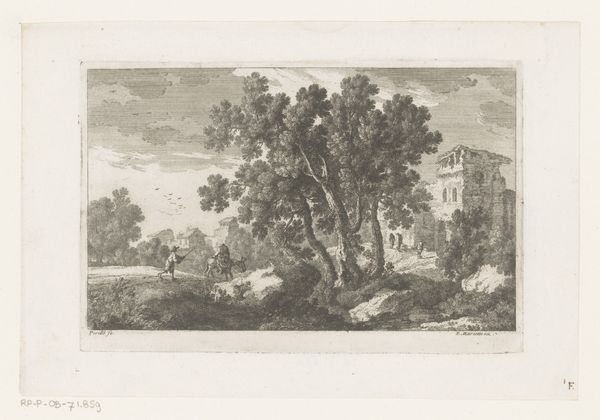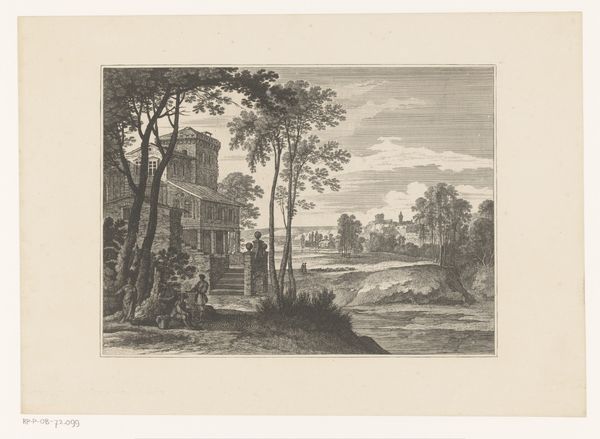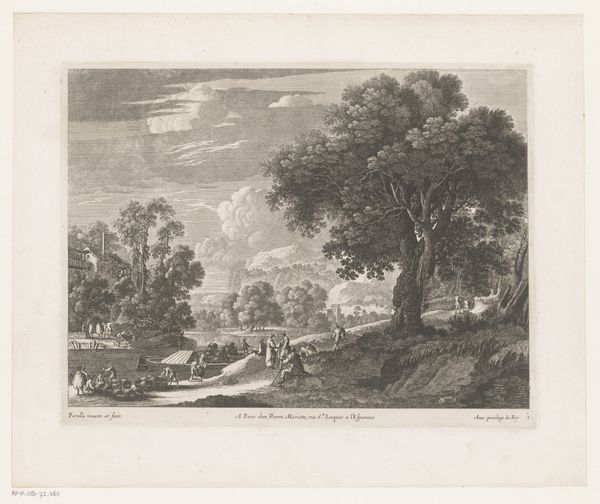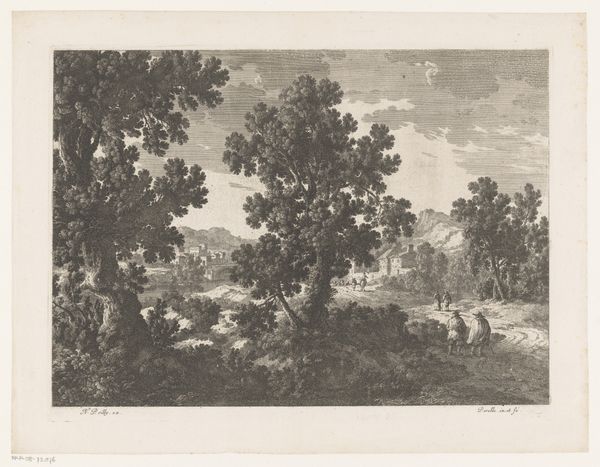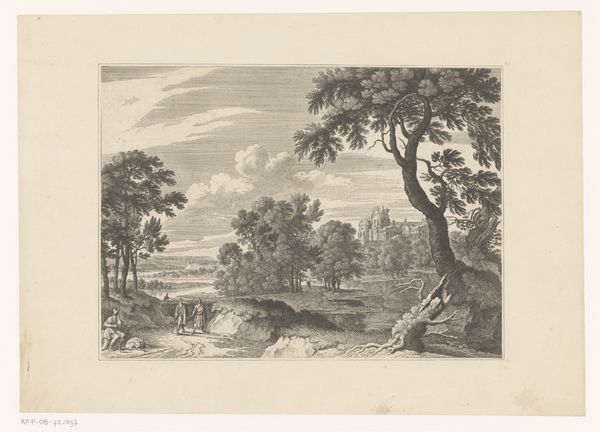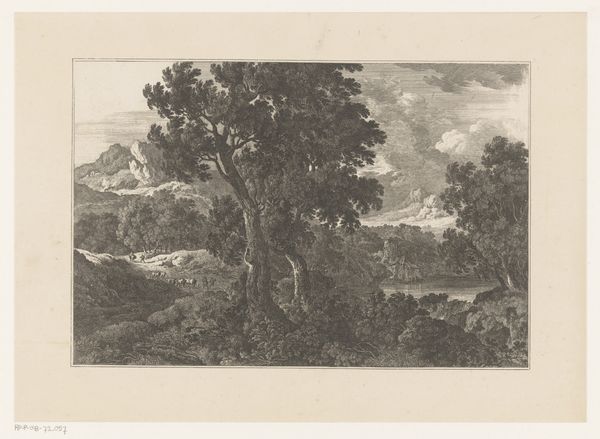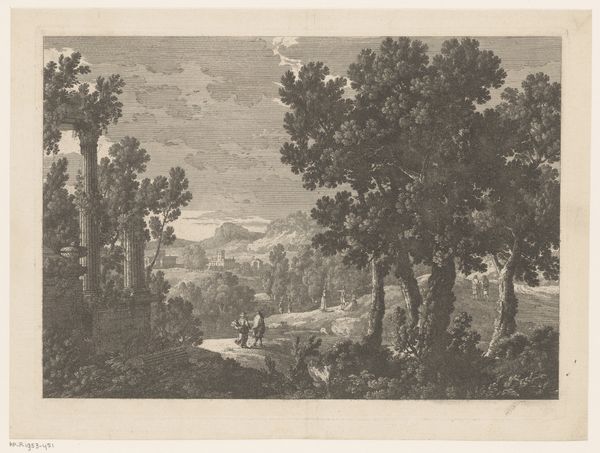
print, etching
#
baroque
# print
#
etching
#
landscape
Dimensions: height 226 mm, width 309 mm
Copyright: Rijks Museum: Open Domain
Curator: Nicolas Perelle's etching, "Landscape with Ruins by a River," likely created sometime between 1613 and 1695, presents us with a serene yet subtly melancholic scene. Editor: My first impression is one of quiet contemplation. There's a stillness to the composition, despite the presence of figures, as if the ruins are breathing a sigh of centuries. Curator: Etchings like these were relatively accessible at the time, democratizing art through reproducible means. Considering the context, this work would have brought a taste of idealized landscapes, inspired by classical architecture, into people's homes. Editor: I can see that. The etching allows for this incredibly fine detail, especially in the foliage. It almost feels like a memory, softened by time and etched, quite literally, into our collective imagination. Curator: The process involves using acid to cut lines into a metal plate, which is then inked and printed. That linear quality, combined with the limited tonal range inherent to etching, imparts a distinct feeling. Look at the paper itself, how it affects the contrast... Editor: It's true; it's like a dance between light and shadow, creating a subtle drama. The figures feel dwarfed by the landscape, reinforcing this sense of nature's enduring power and humanity's fleeting existence. Perhaps the artist wanted the viewer to understand nature is larger than humans? Curator: And maybe also a market desire. Consider the demand for idealized landscapes during this period. Perelle's choices were shaped by those market forces just as much as the artistic inspiration found through ruins of previous human creations, thus demonstrating the relationship between production and profit in artmaking. Editor: Maybe the ruins themselves remind us that everything, even the grandest achievements, eventually crumbles. But in that crumbling, there's a unique kind of beauty, a story etched in stone…or, in this case, in acid. Curator: Ultimately, considering its materials and process provides another facet of the art that is interesting beyond artistic quality alone. Editor: Absolutely, the process invites a layered encounter. That little dance, perhaps is one of our mutual fleeting existences through viewing. Thanks for adding even more insights, it makes me appreciate the little dance between viewer and artist even more now.
Comments
No comments
Be the first to comment and join the conversation on the ultimate creative platform.
